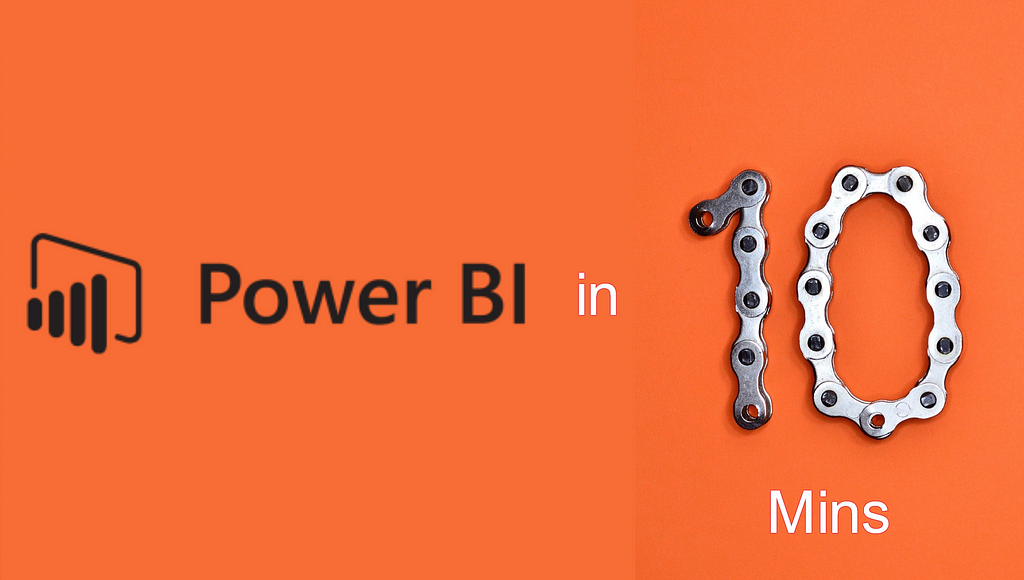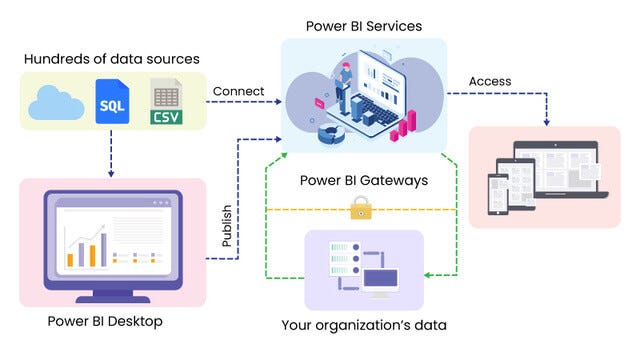Latest news about Bitcoin and all cryptocurrencies. Your daily crypto news habit.
 Photo by Johny vino on Unsplash
Photo by Johny vino on Unsplash
Do you face difficulties in providing more accurate reporting and analysis?Are you unable to identify the latest trends, market conditions and respond quickly to change?
Having problems in optimizing internal business process and driving decisions? What about obtaining important business reports? Is it challenging to convert raw data into actionable insights?
If yes, then this blog is definitely for you!
Well, if you are using Excel, it may be difficult to work with the large data which ultimately creates roadblocks for data-driven enterprises.
And if you are using any other tools which have fewer competencies, it may be difficult to harness data for driving the business decision.
So, how to make an informed decision with the use of data?
Well, in such a scenario, the powerful Business Intelligence system can come to rescue.
Gartner has recognized Microsoft as a leader in Analytics and BI platforms for 11 consecutive years.
Why do organizations prefer to use Power BI?
Before going in-depth let’s start with basics.
What Is Power BI?
Power BI is a cloud-based business analytics service by Microsoft enabling anyone to visualize and analyze data with greater speed, efficiency, and high understanding.
Moreover Power BI:-
- Is an interactive data visualization tool which makes it easy to share data across the organization.
- Delivers valuable insights to make quick and informed decisions
- Transforms raw and unprocessed data into insightful and stunning visuals for officials to communicate and understand the business better.
- Provides access to the customized reports and interactive dashboards which help to have a complete 360-degree view of the business.
Companies like Dell, Wipro, Metro Bank PLC, Edsby, Oraylis, Vizion solutions and many more are already using Power BI to grow their businesses.
Have a look at this video
Who Can Use Power BI?
- It can be used by Busines Analysts and IT personnel to- create interactive data visualization from multiple data sources- deliver real-time insights across the organization
- It can be used by Enterprises to- simplify management- achieve compliance- get accurate and reliable reports- detect anomalies- streamline the workflow
- Developers can use Power BI REST API to automate application lifecycle. Moreover, they can- Embed stunning visuals in apps, portals, websites, etc.- Develop and test visuals with open-source JavaScript libraries like D3, jQuery, and more.
But, How Professionals Can Have Access To This Tool?
Well, there are three ways to use Power BI
- Power BI Desktop: You can connect to data through multiple data sources, combine them into a data model and create compelling visuals.
- Power BI Service: It is a cloud-based, online service for collaboration with the teams and corporations. The reports created in Power BI desktop can be shared in Power BI service, where you can continue modifying them. You can also create dashboards based on your reports in Power BI service.
- Power BI Mobile Apps: Power BI offers a set of mobile apps for iOS, Android and Windows 10 mobile devices, where you can view, interact and securely access reports, dashboards, and other data on the go — all in one app.
To be precise, the desktop is for creating content; the Service is for sharing the content; the mobile apps are for getting insights anywhere on any device.
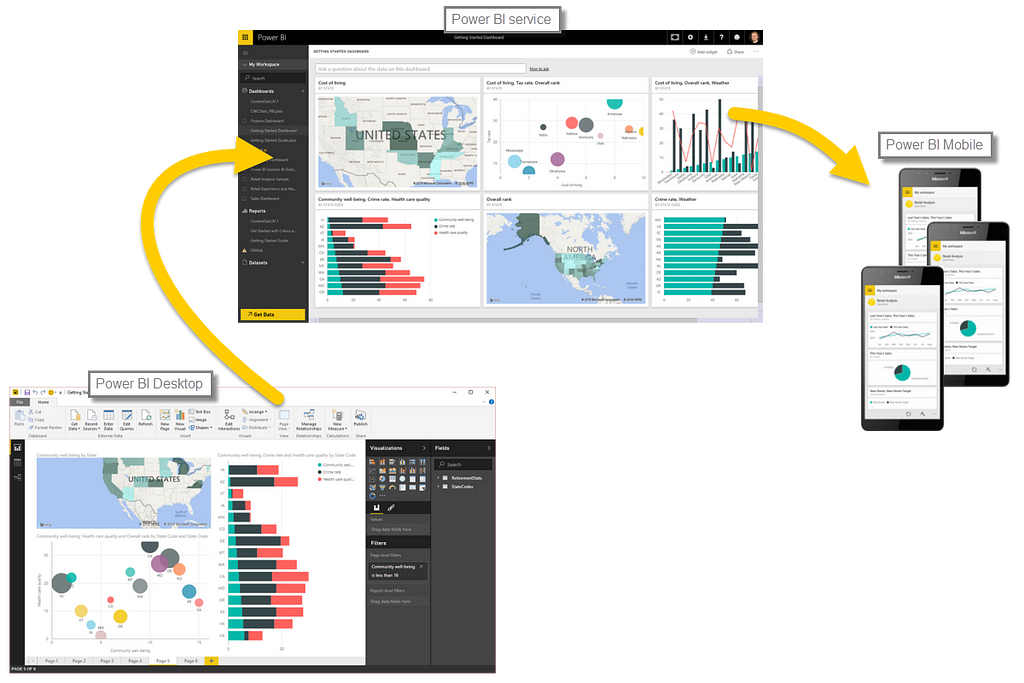 Image Credit: https://docs.microsoft.com
Image Credit: https://docs.microsoft.com
To understand in a better way, you need to know the Power BI architecture.
But before that, you must be aware of Power BI components.
Power BI is a combination of components where each component plays an important part in Power BI solution.
Overview Of Power BI’s Components
Power BI offers several components that enable users to create and share data reports which include:
- Power Query: Facilitates data search capabilities and transform & merge data from multiple data sources.
- Power Pivot: In-memory data modeling component which enables highly-compressed data storage and extremely fast aggregation and calculation.
- Power View: An interactive visualization tool which enables drag-and-drop interface to the users.
- Power Map: a 3D geospatial data visualization tool
- Power Q&A: A natural language question and answering engine
- Data Management Gateway: By using this component you get periodic data refreshers and data feeds.
- Data Catalog: User can easily discover and reuse queries using Data Catalog. Metadata can be facilitated for search functionality.
Let’s have an overview of the Power BI architecture
Power BI Architecture: Sharing And Deploying Files For Power BI solution
- Connecting Data
Power BI can connect data from a variety of data sources.
There are two primary options for sourcing data:
(1) Importing the data to power BI
(2) Using the Direct Query.
If you are importing a file to Power BI, it limits the data sets to 1 GB, but if the size is more than 1 GB, you can use Direct Query (you can build reports based on extremely large datasets).
- Transforming The Data
Once the data is connected, you can transform it as per your needs. Transforming data includes changing the name of columns or tables, modifying the text to numbers, removing rows, adjusting rows, headers and much more. There is a number of transformation options available to shape your data.
- Reporting And Publishing
Here reports are created which represent different findings and insights from that dataset. Basically, it is in the form of a graph, pie-charts, slicers, etc. It is highly interactive and customizable; which updates as the underlying data changes. After creating a report, you can publish them to Power BI services.
- Creating A Dashboard
A power BI dashboard consists of a single page, often called canvas that tells a story through visualizations. You can create a dashboard by pinning the individual element or live report page. As it is limited to one page, a well-designed dashboard contains only the overview.
Power BI
Experience Your Data. Any Data, Any Way, Any Where
Power BI: How It Can Be A Game-Changer For Enterprise?
- Gathers Data From All The Data Sources
Power BI makes it easy to fetch data from the cloud services including Microsoft Dynamics, Salesforce, Google Analytics, Zen desk, Facebook and more. No matter where your data is available, power BI enables to shape the data from different sources; enabling you to create visual reports that you can easily share with others.
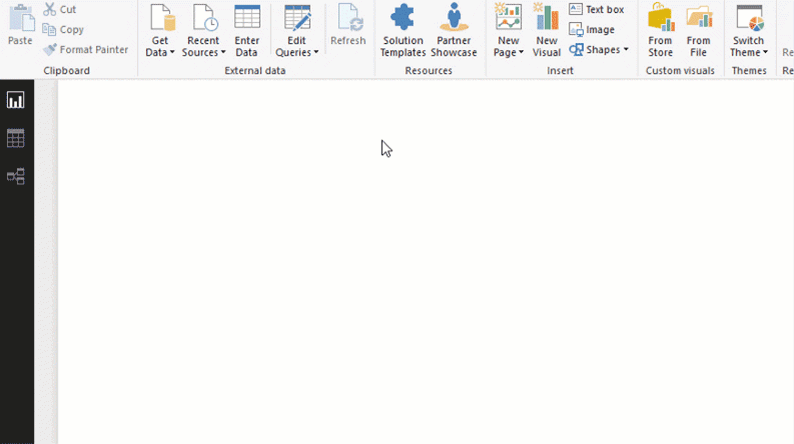 Image Credit: https://powerbi.microsoft.com/en-us/desktop
Image Credit: https://powerbi.microsoft.com/en-us/desktop
- Rich Power BI Dashboards To Make Informed Decisions
With Power BI, you can create personalized dashboards enabling it to monitor the business needs in real-time. It makes easy to solve the problems as they occur and provides a holistic view of the business empowering the teams to make informed decisions. You can easily embed the dashboards and BI reports in the applications to provide the unified user experience.
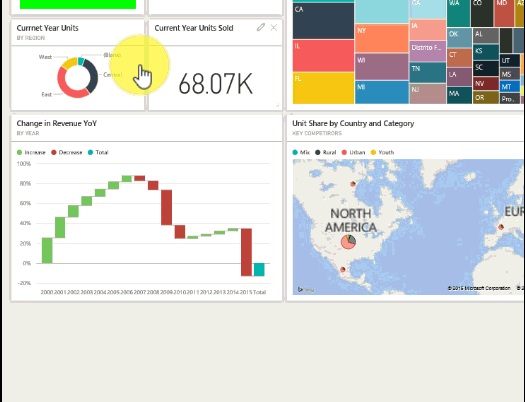 Image Credit: https://community.powerbi.com
Image Credit: https://community.powerbi.com
- Ask Questions- Get Answers In Real Time
How about asking queries in natural language and getting answers in stunning interactive visualization?
Well, with Power BI, you can ask a question and get an answer in the form of right chart and right graph. It has auto-search functionality which lets you scan the hidden insights in seconds. It stores all the information in a centralized location and makes interaction with fast and quick data.
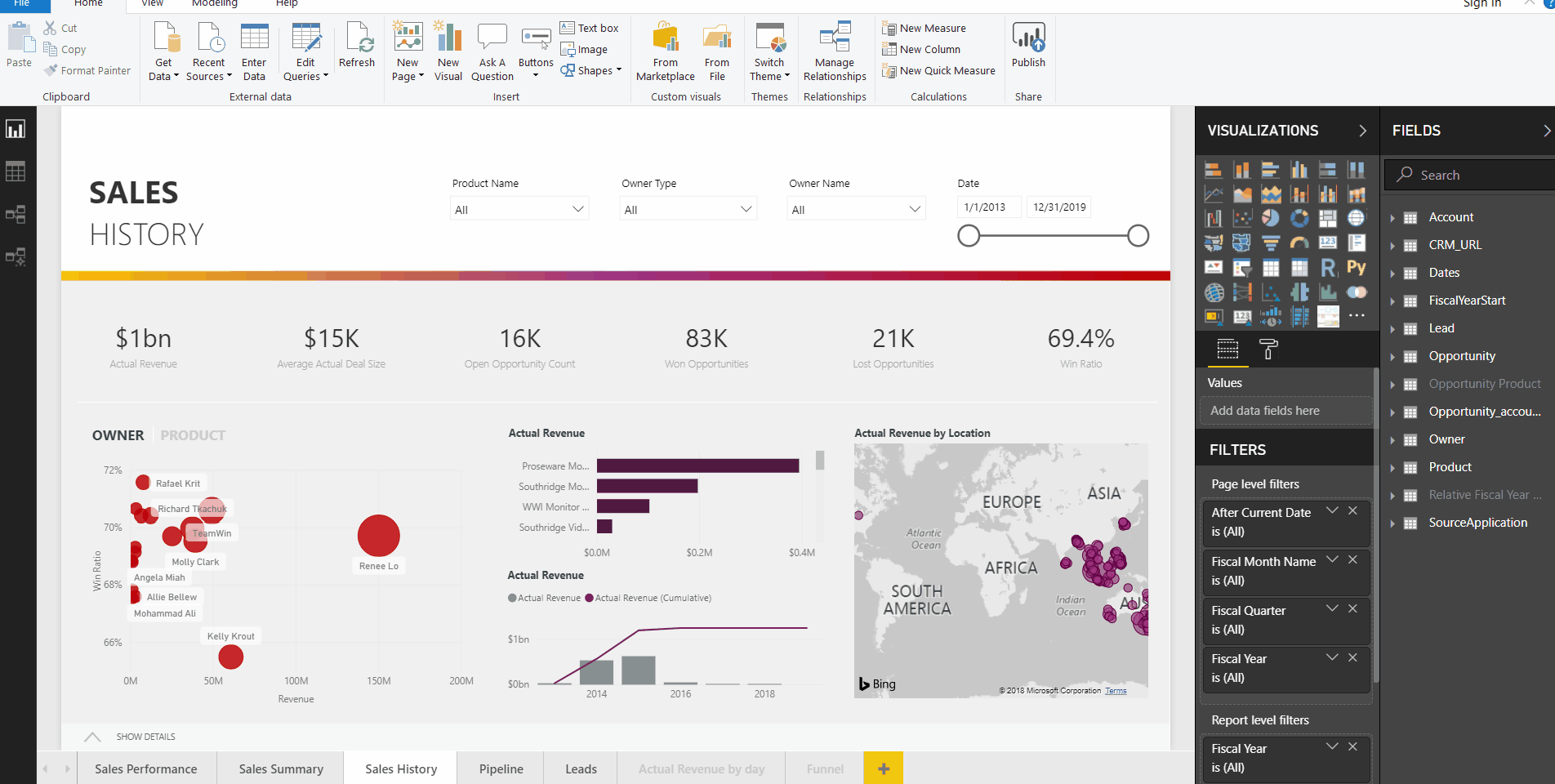 Image Credit: https://powerbicdn.azureedge.net
Image Credit: https://powerbicdn.azureedge.net
- Tell Stories With Interactive Reports
The timeline storyteller is one of the trending custom visuals in Power BI that convey information and details that vary over time. It presents data in the form of circle, grids, spirals or any custom shapes, or even a simple linear list. It also has layouts, different scale representation like logarithmic and relative, controls for filtering, highlighting and annotation. You can decide how you want your data to be represented, scaled and designed in a timeline.
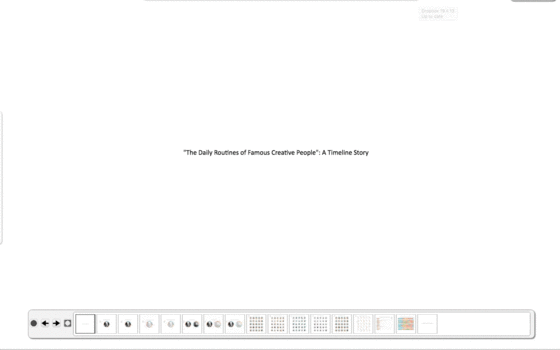 Image Credit: https://timelinestoryteller.com
Image Credit: https://timelinestoryteller.com
- Make Business Decisions From Anywhere
Power BI offers native BI mobile apps for Android, iOS and Windows where anyone can securely access and view live Power BI dashboards and reports on any device. It is easy to access on-premise data stored in SQL server or data in the cloud; no matter wherever you are.
With Power BI Mobile App You Can:
- View live dashboards and reports on a mobile device
- Directly share reports and dashboards from the app, which helps to keep the team on the same page
- Get push notifications for personal data alerts to your device
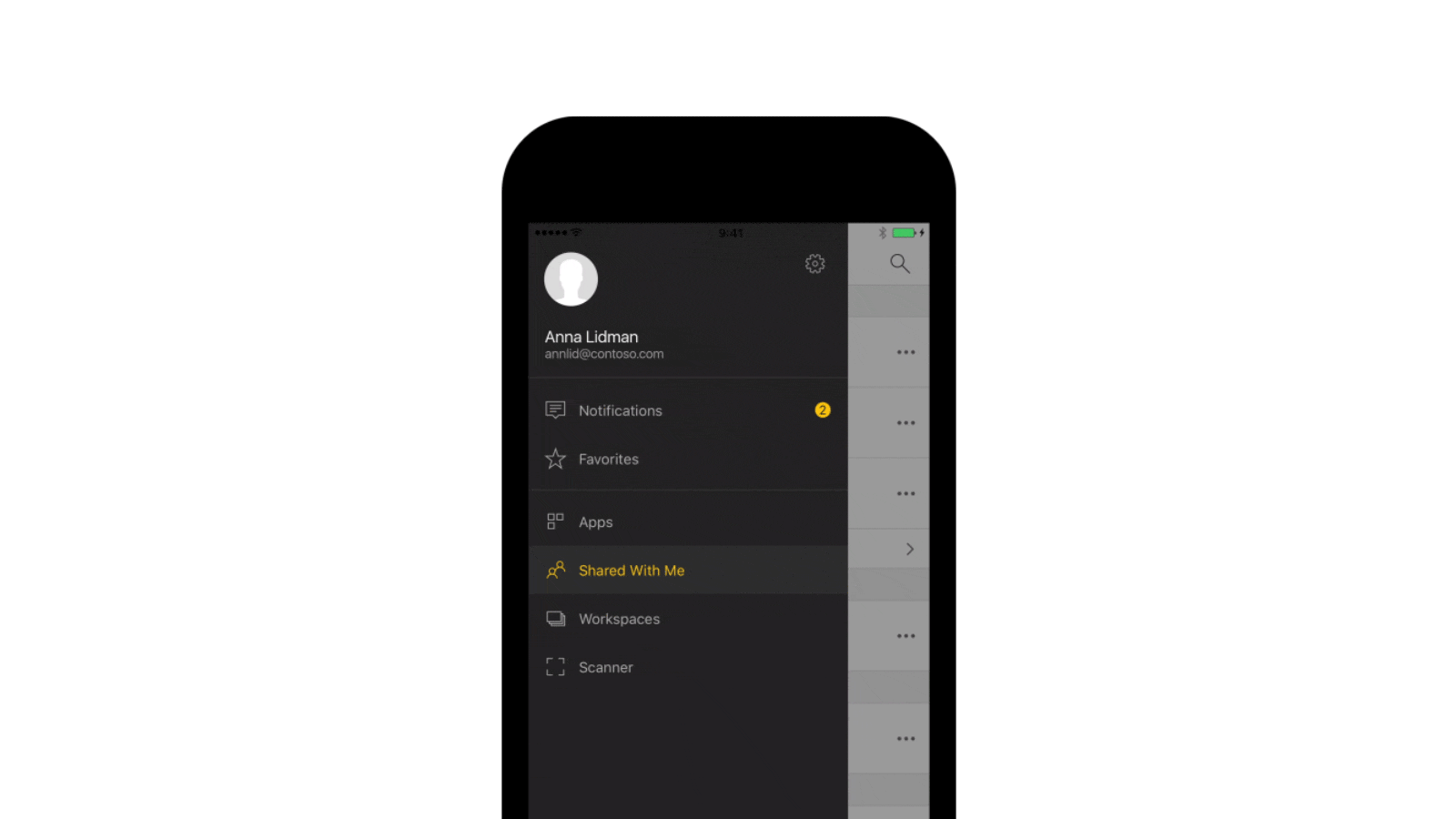 Image Credit: https://powerbicdn.azureedge.netOther Perks Of Power BI
Image Credit: https://powerbicdn.azureedge.netOther Perks Of Power BI
- Little assistance is needed to implement Power BI; No technical support is required
- Service provided by Microsoft and has tight integration with its other business tools such as Office 365, Microsoft Excel, Azure, and SQL Server
- Integrates easily with your existing business environment
- Helps you to set up automatic data refresh
- Users can publish their visualizations on social media posts and emails, making them accessible to whoever may be interested in them
- Data is more accessible as Power BI can connect to the software like Spark, Hadoop, etc. and combine the data into a centralized dashboard
- No memory and speed constraints
- Provides frequent updates with new features and functions
- The community has grown significantly over the years
Looking At The Other Side
Although Power BI shapes the business world and offers numerous advantages but with every advantage, there is always a corresponding disadvantage.
- Dashboards and reports can only be shared with users who have the same email domains or email domains listed with your Office 365 tenant.
- The list of Power BI components is very long and sometimes it becomes difficult to understand which component is required.
- Microsoft Power BI doesn’t allow you to build scheduled reports, personalized user views, personalized notifications, personalized security views
- Not all reports can be shared with colleagues as it needs a pro-license to work collaboratively
Although, Power BI has few disadvantages; its unique features and functionalities are aligned with the business decisions. Thus it is loved by most of the organizations.
How Power BI Is Different From Other BI Tools?
To simplify this, let’s compare Power BI with Tableau and QlikView which are the industry-leading BI tools.
- Tableau doesn’t have a free version. The Personal version of Tableau cost $420 and the Professional version will cost you $840 annually. Whereas, the PRO version of Power BI will only $120 but the free version itself covers a lot more than Tableau.
- QlikView doesn’t support Predictive Analytics which makes it difficult to make data-based decisions whereas Power BI can help you to create predictive models and with the content pack of Power BI, you can visualize the predictive results.
The Future Of Power BI
The future belongs to the solution that is
- Flexible
- Affordable
- Innovative
- Integrates with other solution hassle-free
- Easy to configure and can be viewed anywhere on any device.
Most importantly, it should have the features and functionalities that enable to make quick business decisions. And Power BI fits all these criteria.
So, of-course future holds the best for Power BI and it is here to stay for many more years ahead.
What is your opinion? Do you think businesses should use Power BI? Please express your opinion below or connect with us to know more about Power BI.
Note: This post was previously published on our blog: here
Microsoft Power BI In 10 Minutes [Quick Guide] was originally published in Hacker Noon on Medium, where people are continuing the conversation by highlighting and responding to this story.
Disclaimer
The views and opinions expressed in this article are solely those of the authors and do not reflect the views of Bitcoin Insider. Every investment and trading move involves risk - this is especially true for cryptocurrencies given their volatility. We strongly advise our readers to conduct their own research when making a decision.
